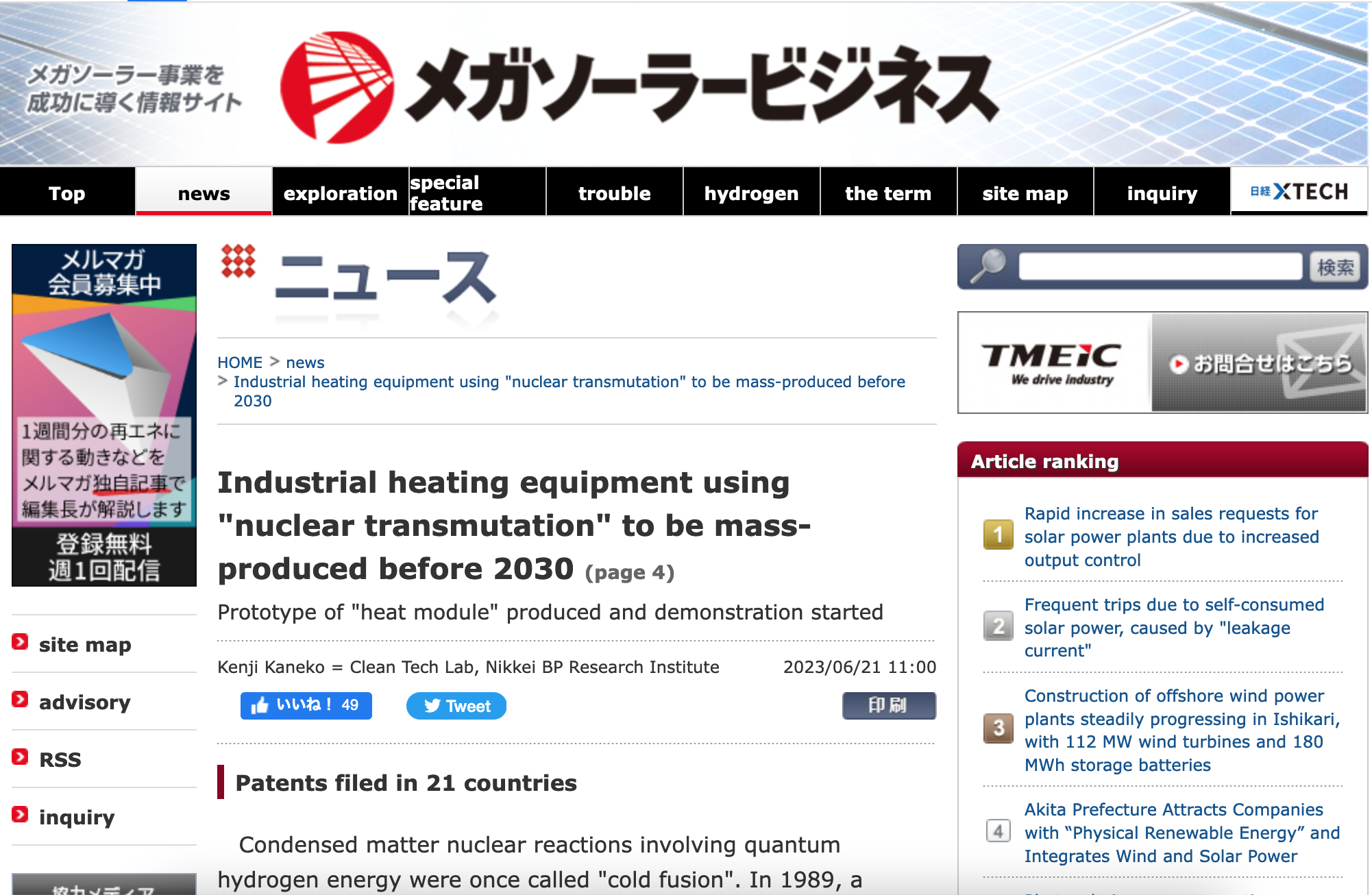
TOKYO — June 21, 2023 — An article published in Nikkei Asia by Kenji Kaneko, Clean Tech Lab, Nikkei BP Research Institute, outlined Clean Planet’s momentum in producing industrial heat modules involving quantum hydrogen energy before 2030. Although initial results in the 1980s of “cold fusion” were difficult to reproduce, research in the field continued.
In addition to the electrode method, phenomena such as heat generation due to deuterium absorption in palladium nanoparticles and nuclide transmutation due to the permeation of deuterium gas into palladium thin films have been reported. Since the 1980s, reproducibility gradually increased.
An epoch-making discovery
Clean Planet's quantum hydrogen energy uses light hydrogen instead of deuterium to generate excess heat, and nickel and copper, which are relatively inexpensive, are used as the reaction field, rather than rare metals such as palladium, to generate heat. Clean Planet’s discovery has great potential as a low-cost, self-sustaining, distributed energy source.
Top companies and universities on board
Venture companies in the field of condensed matter nuclear reactions have sprung up worldwide. In the United States, major IT companies have also entered the market. This year, ARPA-E chose eight teams to prove low-energy nuclear reactions, including Massachusetts Institute of Technology (MIT) and Stanford University. Clean Planet is leading the way. The company has applied for 183 patents in 21 countries, and 69 patents have been granted.
Based on Clean Planet’s research results, Mitsubishi Estate invested in the company in January 2019, Miura Industry in May of the same year, and Mitsubishi Corporation in July 2022. In April 2023, Hiroshi Komiyama, former president of the University of Tokyo and current chairman of Mitsubishi Research Institute (MRI), and Carl Page, a global environmental investor, were appointed advisors. Recognition at home and abroad is gradually increasing.
The principle of condensed matter nuclear reactions has yet to be completely understood even now. Current nuclear physics cannot explain that nuclear transmutation occurs in an environment of several hundred degrees Celsius and that neutrons and gamma rays are not emitted. Several researchers worldwide, including Professor Emeritus Akito Takahashi of Osaka University and Associate Professor Peter Hagelstein of MIT, have proposed theories to explain the phenomenon, but there is no universally accepted theory.
Closing in on an answer
In industrial technology, there are cases where the discovery and industrial application of phenomena such as high-temperature superconductivity precede the elucidation of the mechanism. On the other hand, theoretical support greatly improves the controllability of quantum hydrogen energy and increases social acceptability. As the potential for industrial technology becomes apparent, the number of research institutes and companies working in this field will increase. As the base of research and development expands, understanding the mechanism will likely progress in parallel with commercialization.